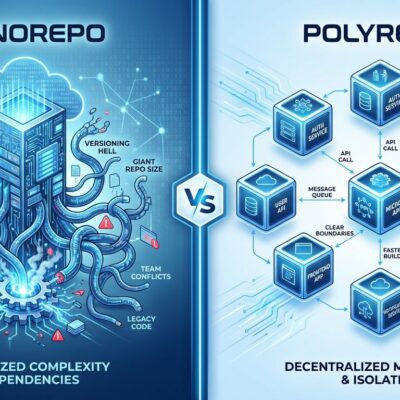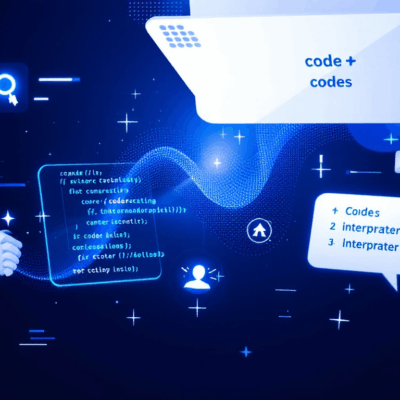
Cursor, an AI-first code editor nobody heard of 18 months ago, just hit 100,000 daily active developers and $8 million in annual revenue. That makes it the fastest-growing IDE in history and the first real threat to VS Code’s decade-long dominance. The milestone signals a category shift: native AI integration beats Microsoft’s plugin model. GitHub Copilot can’t match Cursor’s performance because it’s fighting with one hand tied behind its back—the extension API. The traditional IDE is dead. AI isn’t a feature you bolt on. It’s the entire product.
Why Native AI Beats the Plugin Model
Cursor’s growth proves architectural superiority. GitHub Copilot operates through VS Code’s extension API, which creates fundamental limitations. It only sees open files, delivers completions in 600-1200 milliseconds, and can’t understand project structure. Cursor indexes your entire codebase, generates suggestions in 200-400ms, and comprehends how components connect.
Developer experience reflects this gap. Cursor feels like the editor reads your mind. Copilot feels like slightly smarter autocomplete. Acceptance rates prove it: developers accept 35-45% of Cursor’s suggestions versus 25-30% from Copilot. That 15-percentage-point gap compounds over thousands of completions daily.
The architectural difference matters more than the AI models. Both use GPT-4 and similar foundation models. Cursor wins because native integration gives it full context and zero API latency. Extensions can’t compete with native code for AI use cases—the lesson applies beyond editors.
Microsoft’s Strategic Problem
VS Code plus Copilot looked like perfect strategy. Dominant IDE with 70% market share, paired with AI plugin generating $100M+ annual revenue. The plugin architecture that made VS Code extensible now makes it vulnerable. Adding AI through extensions can’t match rebuilding the editor around AI from day one.
Microsoft faces bad options. Doing nothing means losing market share to Cursor at 5,000 new users monthly. Improving Copilot can’t fix extension API limits—you can’t patch architectural constraints. Rebuilding VS Code with native AI takes years and breaks the plugin ecosystem that made it dominant. Acquiring Cursor works but admits strategic failure.
Meanwhile, Cursor grows unchallenged. No Microsoft response emerged despite watching a competitor gain 100,000 users. The silence suggests they see the problem but haven’t found the solution.
The Milestone That Proves Product-Market Fit
Hitting 100,000 daily users in 18 months sets a record. VS Code took three-plus years to reach this scale. Cursor charges $20 monthly when free alternatives exist. That pricing works because the quality gap justifies cost. At roughly 40% paid conversion, Cursor generates $8 million annual recurring revenue. Developers pay $240 yearly for an editor when VS Code costs zero. That only happens when productivity gains are obvious.
The migration pattern is rational, not hype-driven. Top reason: completion relevance and quality. Second: three-times-faster suggestions. Third: codebase understanding that Copilot lacks. Developers report 3-5x productivity improvements on routine tasks. Paying $20 monthly to save five-plus hours weekly delivers clear ROI. Community sentiment runs 60% positive, 40% skeptical. Skeptics cite cost and vendor lock-in concerns, not performance complaints.
IDE Wars 2.0
The first IDE war ran from 2010-2015. Sublime Text, Atom, and VS Code fought for dominance. VS Code won with free pricing plus extensibility. The second IDE war started in 2024: VS Code versus AI-native editors. Cursor represents the first serious challenger to VS Code in a decade.
The pattern repeats from previous disruptions. Incumbents think their moat is safe. Extensions made VS Code unbeatable—until AI changed what matters. Native integration became mandatory. The same extension API that defeated competitors now defends against threats poorly.
Prediction: Microsoft acquires Cursor or a competitor within 12-24 months. Building native AI into VS Code takes too long. Acquisition is faster. This matters beyond editors. Every developer tool faces the same choice: rebuild around AI natively or lose to someone who did.
What Native AI Means for Development Tools
Cursor isn’t just a better editor. It proves that AI integration architecture determines success. Plugins worked for syntax highlighting and linting. They fail for AI features requiring full context and instant response. The lesson applies to databases, testing frameworks, debuggers, and deployment tools. Everything gets rebuilt with AI at the core, not bolted on top.
The traditional IDE died when code completion became code generation. Microsoft built the last great pre-AI editor. Cursor built the first great AI-native one. That 18-month head start might be insurmountable—unless checkbooks get involved.












